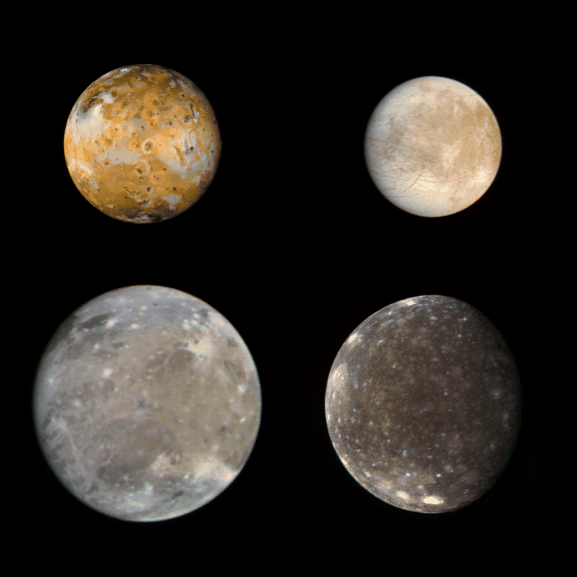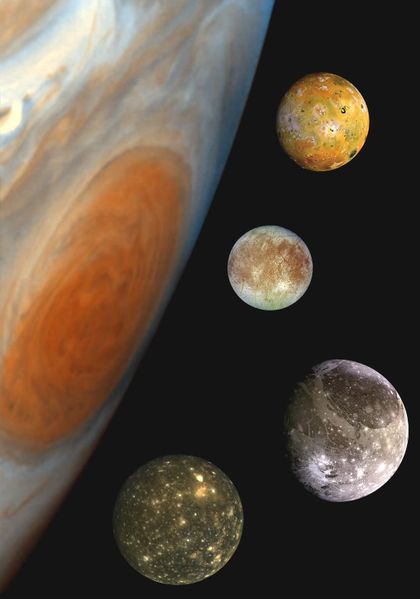


A great deal of good information on this system is now available on Wikpedia so we will just summarize the bulk properties of each of these 4 satellites with links to the rich detail that is on Wikpedia.
Io Io is so close to Jupiter that tidal effects actually melt the mantle/interior portions of Io. As a result, Io has very active vulcanism and an active surface geology that keeps its overall surface quite young.
Europa Europa has a very smooth surface which essentially completely frozen. That surface floats on a subsurface ocean and moves causing some fractures. The lack of much cratering on the surface shows that its quite young so somehow the ice is able to regenerate itself
GAnymede This is the largest moon in the entire solar system (and in fact is larger than the planet Mercury). Ganymede is composed of silicate rock and water ice, with an ice crust floating over a warmer ice mantle that may contain a layer of liquid water. An extensive system of ridges and grooves indicates that tectonic activity has helped to form its surface features. Features reminiscent of old lava flows have also been observed. Extensive cratering is seen on both types of terrain. The density of cratering indicates an age of 4 billion years for the dark terrain, similar to the highlands of the Moon, and a somewhat younger age for the bright grooved terrain (but how much younger is uncertain.
Callisto . Callisto may be the most heavily cratered surface in the entire solar system. Most of the impacts have "punched" through the surface to expose Callisto's icy mantle.